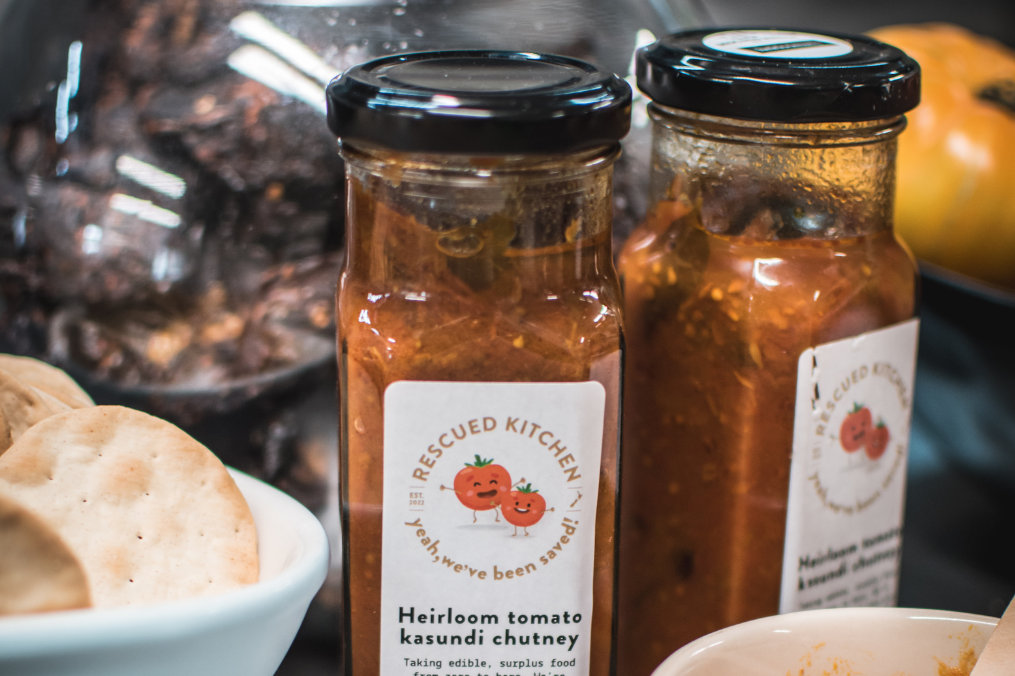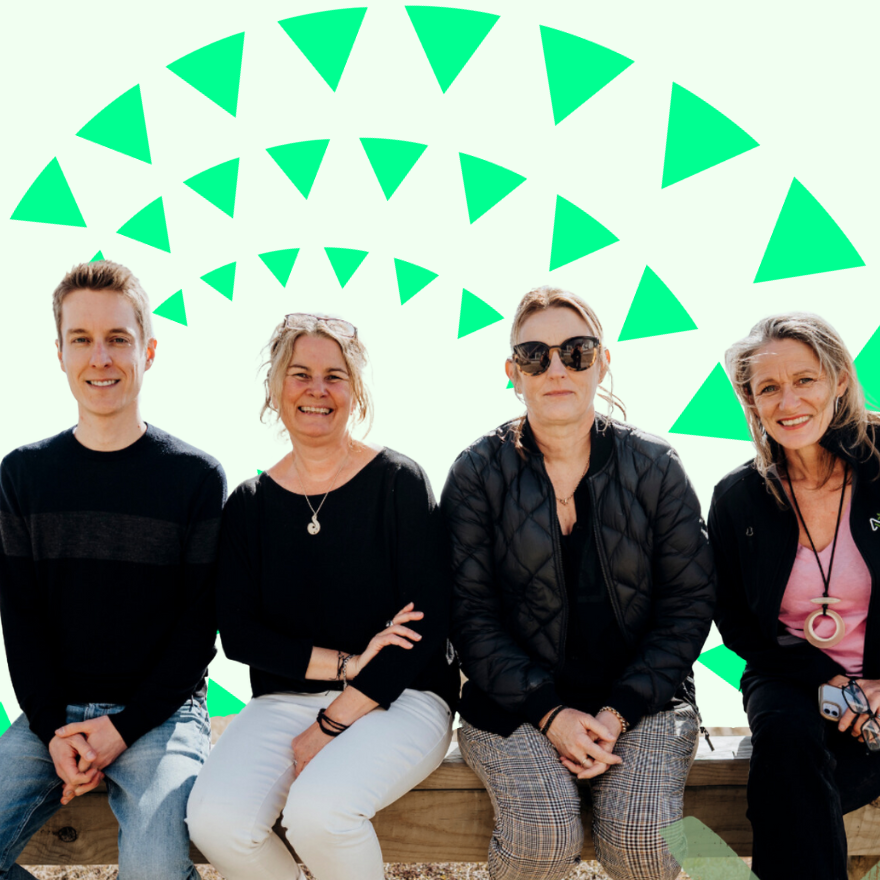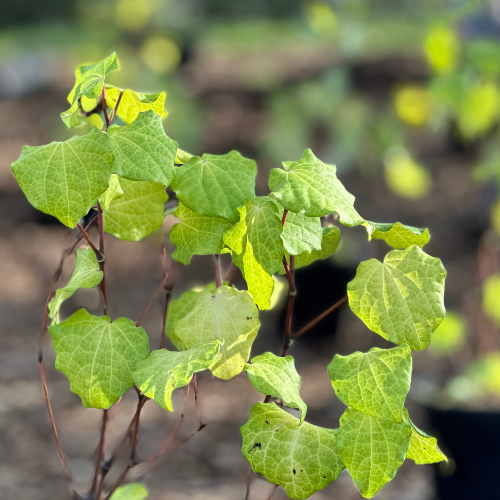
As our food economy transitions from wasteful practices to a more sustainable circular model, upcycling – putting food surplus to good use – presents new opportunities for communities and businesses.
Looking back at the impacts of COVID-19 and Cyclone Gabrielle and facing a future that must factor in climate change and rising global need, it’s clear that our current food production model needs fixing.
It’s time to ditch the old ‘take-make-waste’ model based on yield and profit, in favour of a circular economy that puts resources back into the loop, treads more lightly on the environment, and helps ensure good food for all.
This article looks at the potential role that upcycled food can play in a circular food economy for Tāmaki Makaurau Auckland, and how local businesses can benefit by contributing.
What is upcycled food?
Upcycling uses food that would otherwise go to animal feed, compost or landfill, even though much of it is still good enough to eat. It can be found at every point along the food production chain: harvest gluts; stalks and other trimmings (from fruit, vegetables and meat) that pile up in supermarket processing operations; mislabelled or wrongly mixed products; by-products from the processing of other foods; ‘wonky’ fruit and vegetables rejected by consumers; foods past their ‘best by’ date; and more.
Why is upcycling important?
In recent years, food prices have been rising at almost twice the rate of wage increases, exacerbating social inequity. Food insecurity affects one in six children (rising to one in three for children of Pacific peoples and one in four for tamariki Māori), according to Child Poverty Action Group. Our most vulnerable communities have easy access to fast food, but poor access to nutritious, fresh food – the consequences of which include poor health outcomes.
And yet the root problem isn’t food scarcity, but a system that allows too much to go to waste. Globally, about 30 per cent of grown food never gets to market.
Aucklanders throw away about 100,000 tonnes of food each year, and this organic waste is our largest emitter of greenhouse gases (mainly methane) from landfill. Meanwhile, our productive soils, such as those at Pukekohe, need protecting from the risk of depletion.
Upcycling doesn’t solve all our issues, but it can make a difference. For instance, edible fresh produce and mislabelled products can be redistributed to food hubs to support people who can’t afford to buy food. By-products can become an ingredient in high-value food and beverage products, or in nutraceuticals (health and well-being products derived from natural resources).
In moving us away from the broken model, upcycling has many benefits:
- By repurposing existing produce, it helps free up valuable farmland and reduces waste overall.
- It creates new economic opportunities out of existing supply chains – connecting growers, suppliers, food innovators and other stakeholders.
- It contributes to regional (and national) food security, resilience and equity.
- In using local resources instead of imports, it reduces food miles.
- It supports Auckland’s move to a circular food economy.
Towards a circular economy
A circular economy means putting resources back into the system wherever possible. It underpins Auckland’s goals for a food system that is environmentally sustainable; is nutritionally adequate, safe and healthy; contributes to food security and resilience; and is culturally acceptable, accessible and equitable.
A circular system also supports Te Tāruke-ā-Tāwhiri – Auckland’s Climate Plan, particularly its following priority actions:
- support primary industries and small businesses to increase food security, reduce emissions, and build economic and climate resilience;
- protect our productive soils and move towards regenerative practices;
- prevent and reduce waste, and maximise the value of surplus food; and
- increase supply of, and demand for, local, seasonal and low-carbon food.
Surveys have shown that, while there is some resistance to upcycled products because of the perceived connotations with waste, two-thirds of Kiwi consumers want to make environmentally friendly choices, even if it costs them more, all creating a growing market for upcycled products.
Good for business
Upcycling can benefit any food-related business – be it a grower, producer, distributor or outlet – with an interest in adopting sustainable and innovative practices to reduce emissions, gain a competitive edge and enhance its reputation.
Businesses that access local producer-distributor networks, instead of relying on imports, enjoy shorter supply chains and greater efficiencies. Making use of an existing food surplus can dramatically reduce overheads, as well as yielding fairer prices for both supplier and consumer and contributing to a resilient local economy.
Upcycling in action
Aotearoa is already taking steps towards a stronger and more circular food economy – both in redistributing edible food resources, and upcycling ingredients into new products.
Good food to good uses
The government-funded New Zealand Food Network (NZFN) collects surplus food from suppliers and growers and redistributes it to more than 60 hubs nationwide, including community kitchens, Salvation Army centres and refuges. To date, NZFN has upcycled more than 23 tonnes of food into over 60 million meal equivalents, supporting nearly half a million New Zealanders.
Communities, too, are driving change, organising food hubs that divert would-be waste food to soup kitchens and compost collectives. Just one example is the Papatoetoe food hub in south Auckland, which turns supermarket surplus into nutritious and affordable kai, and also hosts workshops and cultural events, giving locals a place for connection and empowerment.
New products, new opportunities
Innovative businesses are launching new product lines containing upcycled ingredients. For example:
Auckland-based company Rescued produces a range of baking mixes and breadcrumbs made from surplus bread, crackers from spent grains, and chutney made from surplus heirloom tomatoes (available from Gault’s Deli and selected Woolworths stores). In a world first, it makes wraps incorporating rescued bread flour; in collaboration with Remarkable Tortillas, KiwiHarvest and Woolworths, it is supplying these to the school lunch programme through Montana Food and Events.

Citizen Collective crafts beer using fermentable starch extracted from surplus supermarket bread, which is just past its sell-by date yet still edible. The spent brew mash is then milled into a fine flour, which goes into a sourdough loaf. Citizen has also collaborated with BurgerFuel and CarbonSix Distillery to make a cherry cola from rescued Otago cherries and rumwash (the botanicals from gin distillation). Another collab with BurgerFuel is the Wild Heart burger, which features venison from wapiti culled in Fiordland and shredded wonky carrots from Pukekohe.
Lower Hutt-based Rutherford & Meyer began making fruit pastes in 1986 from surplus harvest produce, and later added wafers and crackers to its range. In 2019, it started using spent grain from a local brewery to make crisps, and to date has rescued over 12 tonnes of grain.
Andrew Vivian founded OVĀVO to give new life to ‘ugly’ avocadoes. Some 10-15 per cent of the national crop fails to make it to our supermarkets; instead, many go to oil manufacturers, who dump the residue after extraction. Noting this wasteful process, Vivian teamed up with Massey University to find a way of freeze-drying the flesh into a powder, with potential for use in baking or as a butter substitute. OVĀVO is also researching uses for the pit and skin in nutraceuticals and natural food preservatives.
Doctors Wageeh Dabdawb and Abeer Dabdawb are the founders of Caffology, ‘New Zealand’s first coffee waste biorefinery’. They want to make our coffee industry circular; currently, New Zealand imports over 70,000 tonnes annually, and 91 per cent of it ends up as a waste product, with each tonne of spent grounds in landfill producing around 340m3 of methane. Sourcing from ethical suppliers, Caffology refines spent grounds into compounds that can be used in food and beverages, personal care products, nutraceuticals, and even a bioplastic and natural pigment.
Future plans
Climate Connect Aotearoa is supporting action 3 of Te Tāruke-ā-Tāwhiri – Auckland’s Climate Plan: ‘Prevent and reduce waste and maximise the value of surplus food’. In 2023, for instance, it sponsored a team, Upcycled United, to take part in XLabs: Future of Food, an online/live workshop for businesses committed to address their environmental impact and realise a circular food economy for Aotearoa New Zealand.
Find out more
If you’d like to implement upcycling in your business, get in touch with our team for introductions to potential partners.


